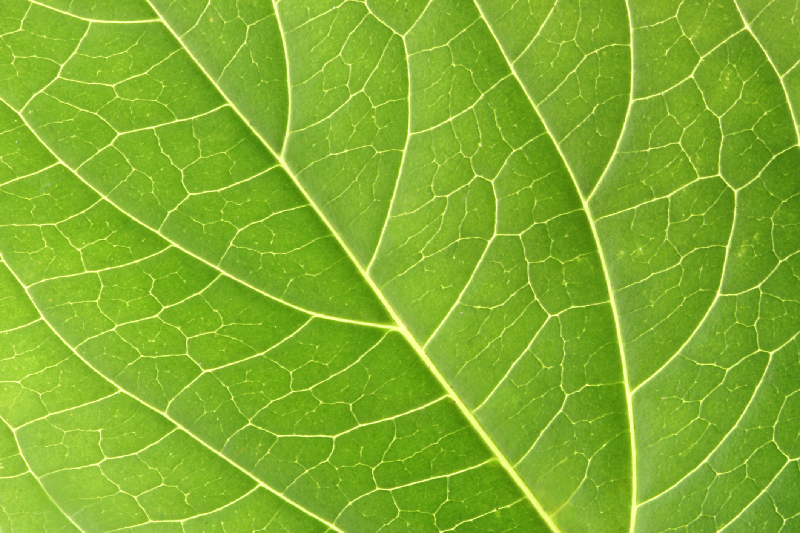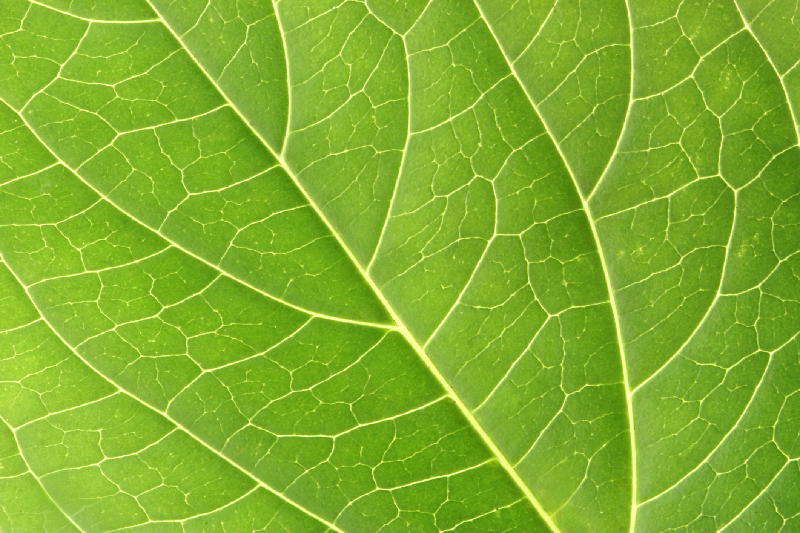Leaf-Like Veins Are Key to Efficient Pump
Microfluidics devices employ tiny pumps to control fluid flows on the microscale, for example, in microchips designed to carry out sensitive chemical or biological analyses. To reduce energy usage, researchers have been developing passive pumps that work like a plant sucking water from soil, and now a team has demonstrated a highly efficient version of such a pump that uses a branched structure analogous to the veins of a leaf. The approach may find use in cooling electronic devices or in exerting precise control over the delivery of medical drugs.
Underneath a leaf’s water-repellent upper surface is a network of veins that distribute water from the stem to the entire leaf. Another layer of cells near the leaf underside stores this water and supplies it to the undersurface, where the water can evaporate through specialized openings called stomata. The evaporation continuously draws water into the leaf through capillary action, so the whole system acts as a pump that requires no energy input.
Researchers have constructed leaf-mimicking devices in which evaporation from a surface acts to pump water. But they have struggled to emulate the branched structure of veins seen in real leaves, which is crucial to allow water to efficiently reach all parts of the leaf surface. Now a team of engineers led by Prasoon Kumar of the National Institute of Pharmaceutical Education and Research in India has found a cheap and reliable way to produce the structure by exploiting a natural process known as viscous fingering.
Kumar and his colleagues first pressed a droplet of viscous liquid between two parallel plates so that it filled the space between. By slowly separating the plates and letting air penetrate, the researchers created a branching pattern as the air displaced the viscous liquid. They used this pattern as a mold and created a fixed network of channels in a thin wafer of silicone about 30 mm in diameter. The veined network of tiny channels spread outward from a central point, analogous to the spot where a stem joins a leaf.
To complete the leaf-like structure, the researchers attached this wafer to a substrate of microporous filter paper capable of absorbing and holding water. The filter paper played the role of the water-storing cells located near a leaf’s undersurface, and pores in the paper behaved as stomata facilitating evaporation.
To test pumping performance, the researchers first saturated the filter paper with water and connected a tube from a water reservoir to the central point of the vein network. Upon exposing the device to air, evaporation from the filter paper drew in water through the network, and the researchers measured the rate of liquid flow from the reservoir. They found that the device pumped liquid roughly 10 times faster than a control device that lacked the network of channels and instead had the supply tube connected directly to the filter paper.
“The novelty of the work resides in the fractal network of microchannels, which increases the pumping rate of the device,” says Laurent Courbin of the University of Rennes 1 and the French National Center for Scientific Research (CNRS). “It’s impressive to see an increase in the flow rate by an order of magnitude.”
The researchers also compared their device’s performance with that of previous pumps. The new design stands out in achieving higher rates of flow at very low pressure, Kumar says, although the comparison is only suggestive, because other devices were not necessarily designed for high flow rates. He says the team plans to make more accurate comparisons in the future.
Kumar believes the new technique could find widespread use in microfluidics pumps that produce very stable flows and that don’t require any source of power. One application may be in pumps pushing high-viscosity fluids, such as blood, through diagnostic devices. Moreover, he says, the techniques used to make the pump are simple and require no special equipment. “We only used readily available materials, and the fabrication process is inexpensive,” he says. “So even labs with few resources should be able to utilize these micropumps.” Kumar envisions applications in blood sampling and electronics cooling in one or two years.
This research is published in Physical Review Applied.
–Mark Buchanan
Mark Buchanan is a freelance science writer who splits his time between Abergavenny, UK, and Notre Dame de Courson, France.





